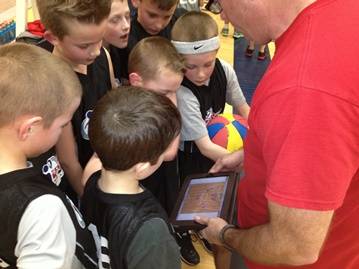 There’s no question about it: kids (and kids at heart) love participating in team sports. In 2011, 21.5 million children between the ages of 6 and 17 played a team sport. And, as ESPN says, “Youth sports is so big that no one knows quite how big it is.”
There’s no question about it: kids (and kids at heart) love participating in team sports. In 2011, 21.5 million children between the ages of 6 and 17 played a team sport. And, as ESPN says, “Youth sports is so big that no one knows quite how big it is.”
Whether it’s soccer, basketball, football, baseball, hockey or rugby, playing an organized sport is a great way for both kids and adults to stay in shape, build close relationships and learn about themselves. Another benefit that many people don’t think of? Being part of a team can also help people prepare for business success.
Participating in a team sport is about more than just having fun. It’s also about doing your best to support the goals of a group of your peers. If you’re looking for ways to prepare for your own future success in business, or you want to establish a solid foundation for your kids, it’s worth your time to consider participating in a team sport.
...



 There is a problem with participation in kid sport.
There is a problem with participation in kid sport. Sports are competitive, and young players sometimes have a hard time dealing with the pressures of the game. Add in the demands of school, and you may end up with one stressed kid. Here are 10 tips for helping your child manage sports-induced stress.
Sports are competitive, and young players sometimes have a hard time dealing with the pressures of the game. Add in the demands of school, and you may end up with one stressed kid. Here are 10 tips for helping your child manage sports-induced stress. Even over the holidays, when your kids are training for sports, you want to provide them with the right foods to fuel their activities. You should also provide your child with the right foods to promote their growth. Certain nutrients are essential to achieve optimal growth; this helps their performance in sports and can help to promote their overall health. Here we consider which macro and micronutrients are vital for growing bodies and where these can be sourced in the diet.
Even over the holidays, when your kids are training for sports, you want to provide them with the right foods to fuel their activities. You should also provide your child with the right foods to promote their growth. Certain nutrients are essential to achieve optimal growth; this helps their performance in sports and can help to promote their overall health. Here we consider which macro and micronutrients are vital for growing bodies and where these can be sourced in the diet. Did you know that young athletes are at a higher risk for heat-related illnesses than adults? This is because kids don’t sweat as much as and absorb heat faster than adults. Plus, kids tend not to want to drink water or other fluids while they’re exercising. Even though most pediatricians recommend that kids should drink half of their total body weight in ounces of water each day, we all know that, in reality, that is the exception rather than the rule.
Did you know that young athletes are at a higher risk for heat-related illnesses than adults? This is because kids don’t sweat as much as and absorb heat faster than adults. Plus, kids tend not to want to drink water or other fluids while they’re exercising. Even though most pediatricians recommend that kids should drink half of their total body weight in ounces of water each day, we all know that, in reality, that is the exception rather than the rule.

